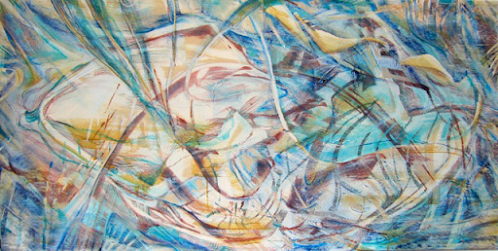Sunny Kim - I sea, You sea
Propeller Art Gallery Space Made More Accessible to the Visually Impaired
Nancy Newton’s exhibition ‘From The Sea/ From The Past’ includes a collection of work which was heavily inspired by music, specifically R. Murray Shafer’s Dream e-scape, landscape and the sea. The dedication and exploration Nancy took over the course of 10 years with the song influenced her creation of many impressive pieces.
For an interpretive plan project idea, I worked with what I saw and learned from the exhibition, my own past experiences, and thought about some future ideas to engage an audience -- specifically those who are visually impaired.
The interpretive project is separated into two parts: the physical space and the artwork.
Artwork -
Nancy was inspired by music and her surroundings. I thought it would be very interesting to explore this connection of place/space and music for someone who is visually impaired as some might be synesthetes. Synesthesia is a neurological condition in which information meant to stimulate one of your senses stimulates several of your senses. Auditory and tactile cues here, for example, can help low vision people to fully understand and "see" the object/piece in front of them.
Auditory: Auditory description can come in different forms whether it is with the use of words, frequencies/wavelengths or specific sounds. I explored a program called Photosounder which creates sounds from images and visual representation from sounds. This helps a lot with setting the mood, and environment for the viewers' experience.





